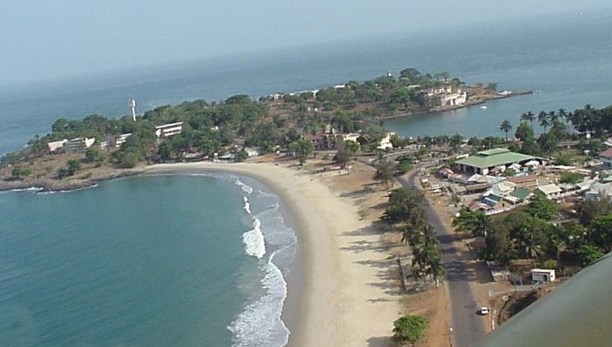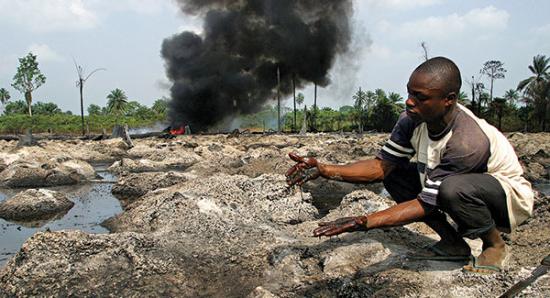Use of Chemical Dispersants in fighting oil spills – GCLME Project
Regional Workshop on Dispersant Use Policies in West and Central Africa
Accra, 16 June - The Interim Guinea Current Commission (IGCC)/Guinea Current Large Marine Ecosystem (GCLME) announces a Regional Workshop on Policies on Dispersant uses in West and Central Africa from 22 to 24 June. This Workshop will be organized in close cooperation with the International Maritime Organization (IMO) under a longstanding agreement between UNIDO, as executing agency for GCLME, and IMO.
The first of its kind under the GCLME project, the Accra meeting is expected to initiate the development of a regional policy on the use of dispersants in the context of oil spill response in the different countries of Guinea Current Large Marine Ecosystem (GCLME) region when dealing with transboundary pollution incidents.
Dispersants are chemical agents such as surfactants and solvents that are applied to oil to break it up into tiny droplets for easy collection of chemical pollutants.
Oil dispersant is like dish soap, lowering the tension between oil and water and allowing small droplets of oil to break away from the larger clumps.
Dispersants can be applied by anything from a hand-held spray can to an airplane.
Other primary objectives will be to present and discuss the results from specific dispersant-related research projects within the context of national policies. The meeting will also examine the possibility of developing a regional strategy for use of dispersants and ways of harmonizing individual countries’ national policies on the use of dispersants.
During the three-day workshop, opportunities will be provided for countries’ representatives to gain a better understanding of the chemistry and effects of dispersants, methods of application, environmental considerations and how dispersants should be considered in relation to other response strategies.
Dispersants application during an oil spill is a significant element of a national response strategy and under certain circumstances may be regarded as the most efficient approach in handling major incidents like the 2010 British Petroleum oil spill disaster in the Gulf of Mexico.
Although the conditions of use of dispersants are detailed in most National Oil and Hazardous Substances Pollution Contingency Plans (NOSCPs) in West and Central Africa, it is important to have a regional strategy on the use of dispersants in particular when dealing with transboundary pollution resulting from major incidents involving several countries.
NOSCPs, more commonly called the National Contingency Plan (NCP), is a blueprint for countries in responding to both oil spills and hazardous substance releases. The first National Contingency Plan was developed and published in 1968 in response to a massive oil spill from the oil tanker Torrey Canyon off the coast of England, the year before. More than 37 million gallons of crude oil spilled into the water, causing massive environmental damage.
To avoid the problems response officials faced in this incident, the United States in 1968 developed a coordinated approach to cope with potential spills in that country’s waters. The United States approach provided the first comprehensive system of accident reporting, spill containment, and clean up, and established a response headquarters, a national reaction team, and regional reaction teams. Therefore, the United States should have been well placed to respond effectively to the BP oil spill. Taking a cue from the American example and of the BP oil spill in the Gulf, GCLME ministers of environment said in the Osu Declaration issued at the end of their second meeting in July 2010 that member states and partners “must put in place effective national and regional systems for response to major pollution incidents, as soon as possible.”
Twenty-five participants from all 16 IGCC member countries, maritime organizations and related institutions from member countries, Ministry Departments, Agencies, Oil Companies, the Private Sector and others identified by the International Maritime Organization will be represented at the workshop. The Benguela Current Large Marine Ecosystem and Canary Current Large Marine Ecosystem will also participate.
GCLME participating countries:
Angola, Benin, Cameroon, Congo, Cote d’Ivoire, Equatorial Guinea, Gabon, Ghana, Guinea-Bissau, Guinea, Liberia, Nigeria, Sierra Leone, Sao Tome e Príncipe and Togo.
The Guinea Current Large Marine Ecosystem (GCLME) region stretches from Guinea-Bissau to Angola, a marine surface area around 350,000 km2 and 2.6 million km2 for the total of exclusive economic zones. The project is executed by the United Nations Industrial Development Organization, and implemented by the United Nations Environment Programme and the United Nations Development Programme. Funding for the project is provided by Global Environmental Facility (GEF) while the New Partnership for Africa’s Development (NEPAD) and the US-National Oceanic and Atmospheric Administration, NOAA constitutes important stakeholding partners.
The project aims to assist States, acting collectively, to protect the Guinea Current region’s estimated 300 million people (half of whom live on the coast) from environmental degradation, food insecurity, depletion of fishery stocks and from land-based pollution. It also aims to help States to restore their coastal and marine habitats.
The GCLME project is executed by the IGCC through a Regional Coordination Unit at Accra, headed by Dr Stephen Maxwell Donkor (sdonkor@gmail.com). He also serves as the Executive Secretary of the IGCC.
Interim Guinea Current Commission/ Guinea Current Large Marine Ecosystem Project
Stay with Sierra Express Media, for your trusted place in news!
© 2011, https:. All rights reserved.






